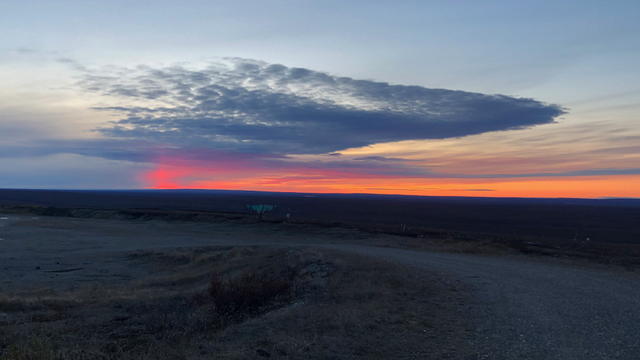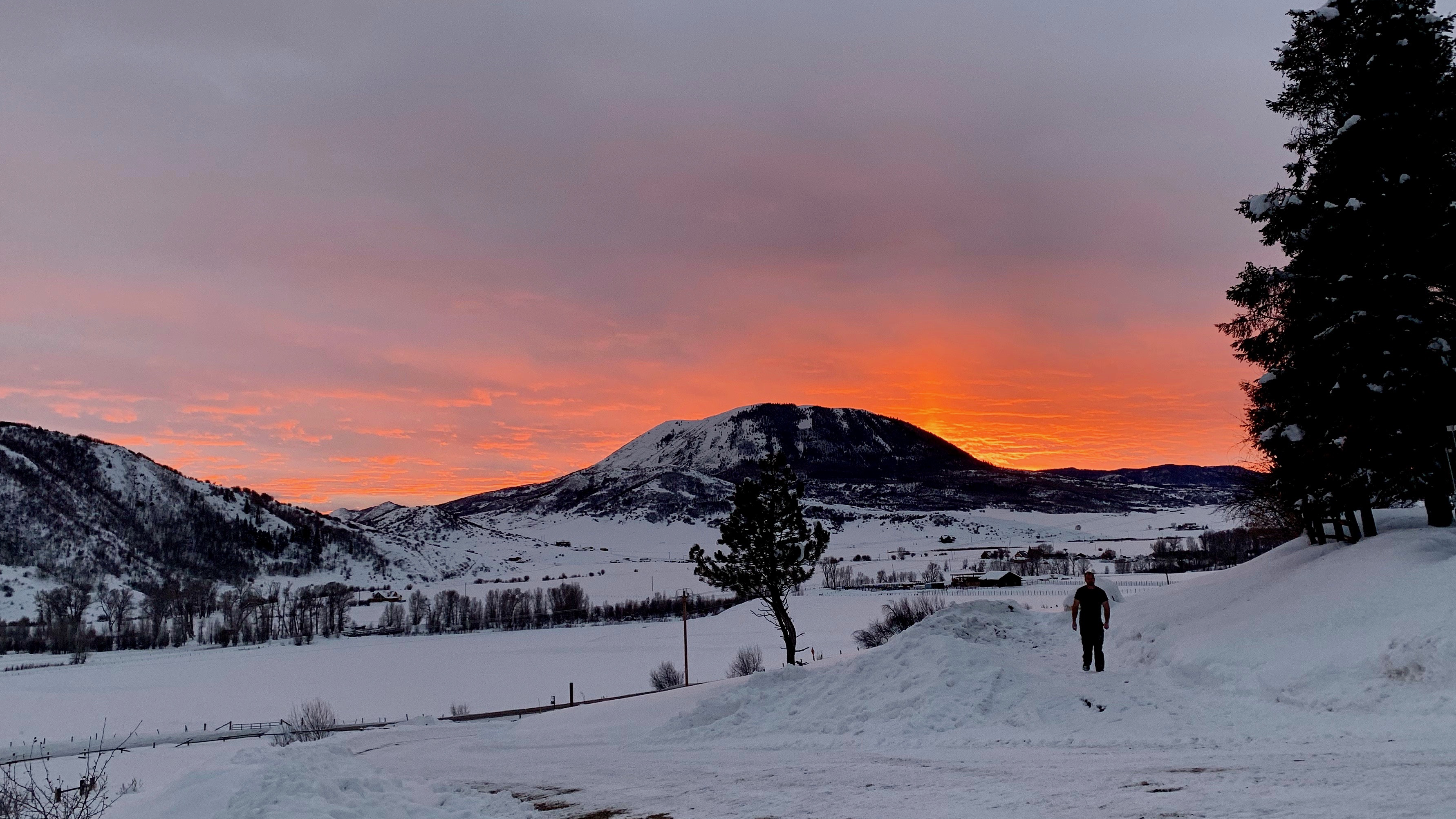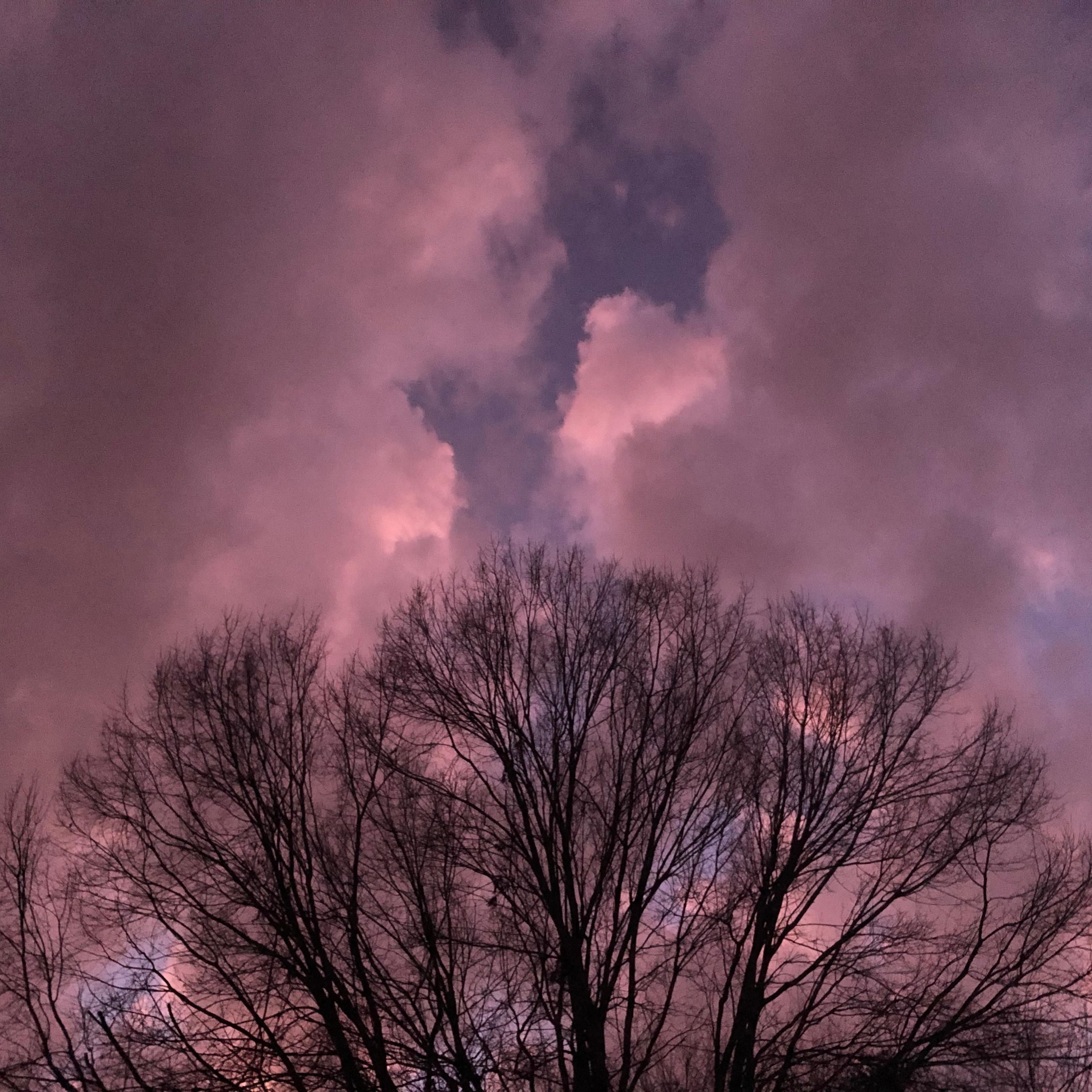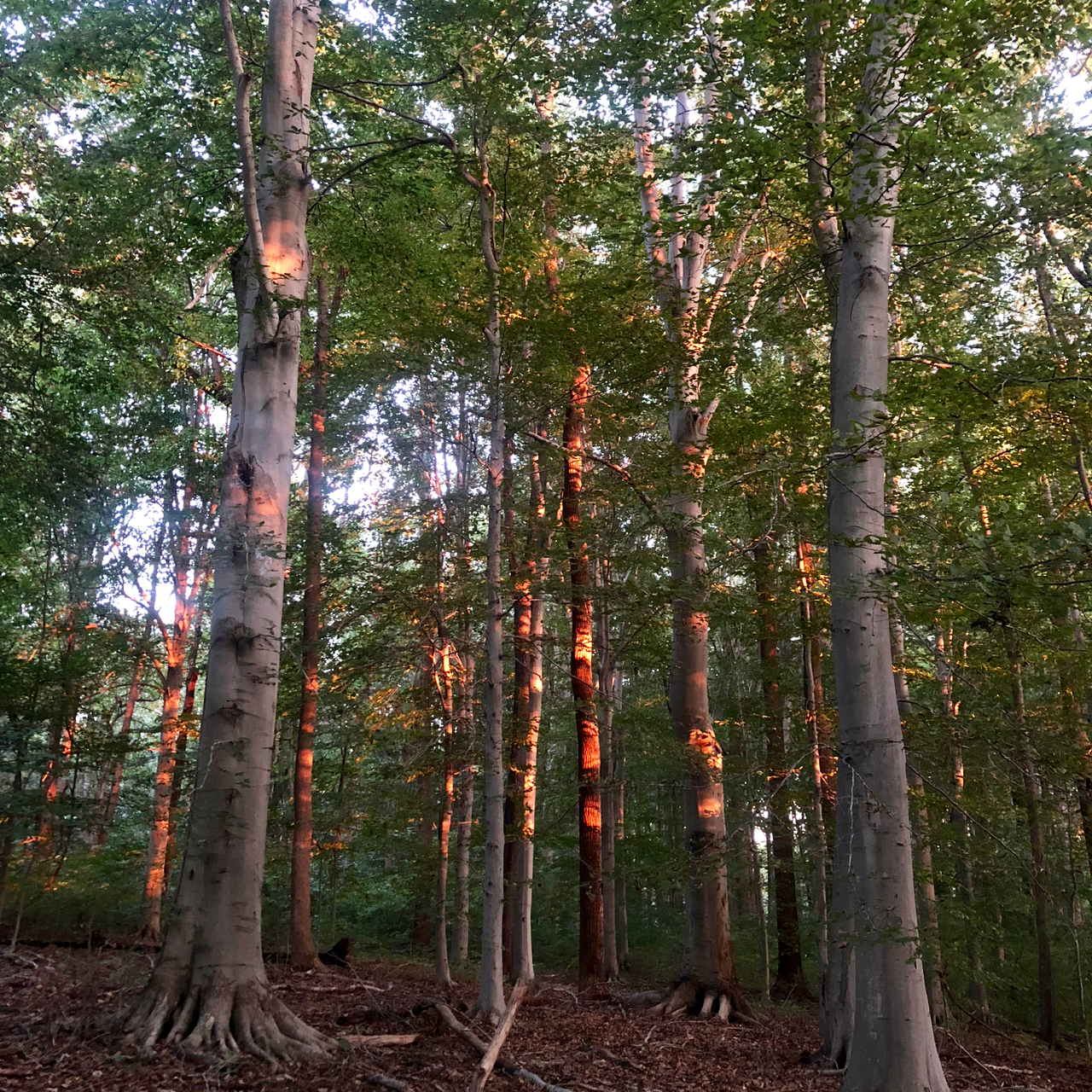Everyone enjoys a lovely sunset at the end of the day. This photo is a reflection of a summer, sunset on the trees. Ever wonder why some sunsets are more dramatic than others? Read more to find out the simplified science of sunsets.
What you need to know. How wavelength impact sunset science.

Long Sunset on the North Slope in Alaska
Length of Light Waves
You need to know a few things to understand the science of sunsets. First of all, light travels in waves. Also, human eyes can only see certain wavelengths. We can see wavelengths between 380-780 nm, Coincidentally, these are the wavelengths of the colors of the rainbow! The order of rainbow colors is red, orange, yellow, green, blue, indigo, and violet. The length of those wavelengths from red to violet is longest to shortest (780 nm to 380 nm).
Selective Scattering
Thousands of particles are in the air and atmosphere. We can see the dust and water, which I’ll talk about later. However, there are also invisible gases such as oxygen and nitrogen. These particles selectively scatter wavelengths of light. Scattering reflects and/or redirects the particles in the atmosphere. The most noteworthy English physicist Lord Rayleigh discovered and coined the term Rayleigh Scattering. The length of the wavelength determines how it is scattered. We are able to see the wavelengths that are scattered.
Short wavelengths are scattered resulting in a bright blue sky.

Wavelengths Traveling to the Earth
During the first part of the day, light from the sun travels the shortest distance through the atmosphere to the earth. As a result, the short blue light waves are scattered. The result we see is a blue sky. In the evening, light waves have to travel farther. The longer waves are reds, yellows, and oranges. The typical sunset is a result of the scattering of longer wavelengths.

Multicolored Sunset - Longer Wavelengths Scattered
Myth Buster Pollution & Sunset Science
An article about sunset science wouldn't be complete without talking about pollution. Some types of air pollution are dust or water droplets. These particles scatter just like gases. Unfortunately, they do not produce colors. Here are a couple common examples. The shafts of light seen in a smoky room or in the sky on rainy or stormy days. Tropospheric aerosols are another type of pollution. These particles scatter too. They subdue the colors of lightwaves. The scattering of these larger particles is not wavelength dependent. So, when daytime light scatters tropospheric aerosols we see gray or white. Consequently, when present in large concentrations sunsets are less dramatic. The bright yellows, oranges and reds are muted to paler colors. We naturally don't go to polluted cities to see blue bird skies or magical sunsets.

References:
Andrew Zaleski, December 10, 2018, “What gives a sunset its color”, Popular Science
https://www.popsci.com/why-sunset-color/
Corfidi, Stephen F., September 2014, “The Colors of Sunset and Twilight”, NOAA/NWS Storm Prediction Center, access 02/09/2020
https://www.spc.noaa.gov/publications/corfidi/sunset/
Konica Minolta Inc., “Precise Color Communication” access 02/15/2020, https://www.konicaminolta.com/instruments/knowledge/color/part2/02.html
